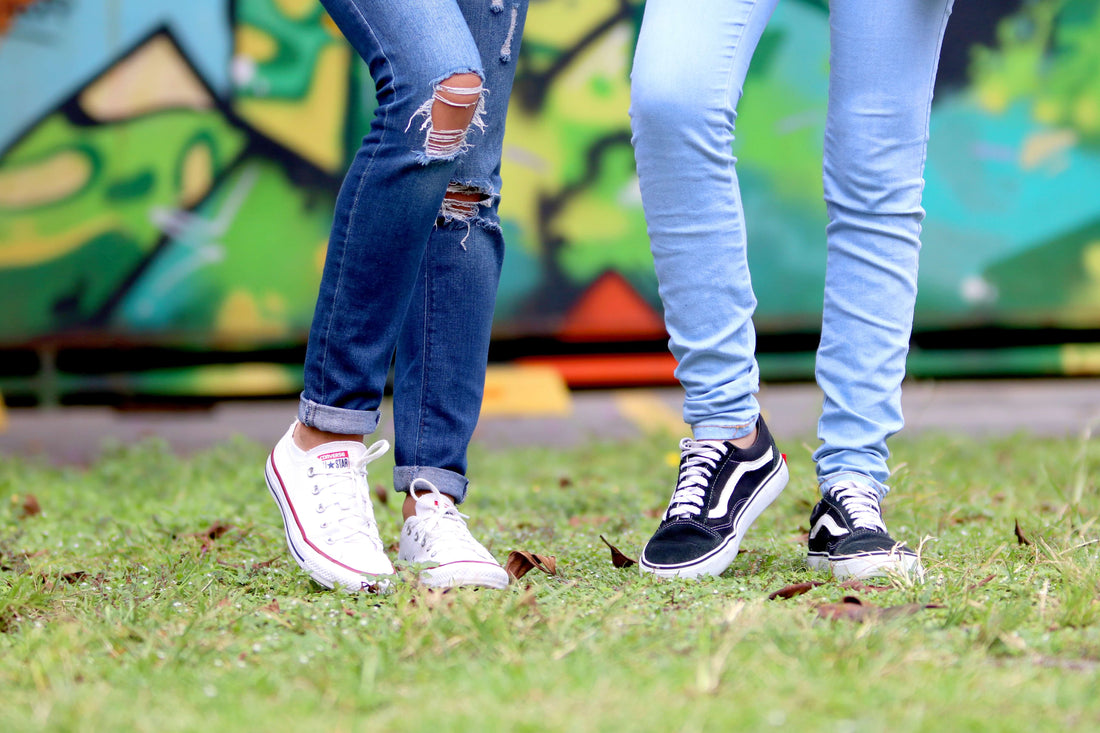A cuff is a layer of fabric at the sleeve end of a shirt at the wrist or at the ankle end of a pant. In this article, we explore the history of cuffed jeans, why one should cuff their jeans, and the different ways one can cuff their jeans.
Contents
The History of Cuffed Jeans
During the 1800s, preshrunk fabrics had not come to existence so the denim that was available was weaved completely from cotton. Cotton shrinks in water and people at the time were aware of this. So they would buy jeans that were larger and longer. Eventually, a few washes later, the jeans would take its intended shape. But before that happened, they would wear the jeans with the leg opening turned up.
Over time, the cuff was used by different people as storage areas. Cowboys who spent many hours on the saddle used the cuffs as a storage space for their tobacco pouch or box of cigarettes as they would be easily accessible without having to get off the horse. High school boys would use the cuffs as extra pockets to store small things such as candy, coins, and pencils.
By the 1960s, preshrunk jeans had come on to the scene and the skinny fit had removed a need for cuffing jeans. Yet, the explosion of vintage styles in the 1990s brought back the cuff look in a major way. Once, used for functional reasons, it had now become a style statement.
Why you should cuff your jeans?
Today cuffing your jeans is important for multiple reasons. Here are some of the reasons you might want to cuff your jeans:
- Your jeans are too long - If your jeans are too long you might want to cuff them to prevent tripping on them when walking or running.
- It is summer time - Cuff your jeans in summer to increase ventilation and let your ankles breathe.
- Do it for the style - Adding cuffing to your jeans help create a contrast that looks extremely fashionable. Not to mention that it gives an opportunity to let your shoes shine as well, creating a great fluidity to your outfit.
Different ways to cuff your jeans
Technically, you can cuff any jeans, however, we recommend cuffing jeans that have some taper towards the end. Boot-cut or wide style jeans can also be cuffed, but they don’t have the same effect as their tapered counterparts.
Simple Roll
The Simple Roll is the most versatile way of cuffing your jeans as it can be used for different kinds of jeans.
Instructions:
Start with straightening the bottom of jeans. Then from the hem, make one fold up which is roughly 2-3 inches in width. Flatten the cuff. Then take the hem from the top of the cuff and fold it towards the leg so that the hem is hidden from the front view. Make the necessary adjustments to keep the cuff smooth.
Skinny Roll
The Skinny Roll works best with tighter jeans. This one is my personal favorite because it is the easiest to do.
Instructions:
Start with straightening the bottom of your jeans. Then from the hemmed seam at the bottom of the jeans, make a thin single fold upwards. Flatten the cuff. Then make another fold upwards of the same width. Make the necessary adjustments to flatten the cuff.
Note: If you think you need more than two folds than we suggest you do the needful.
Pin Roll
Perhaps, the most fashionable way to cuff your jeans is the pin roll method.
Note: A word of caution - try to avoid this method with bulky sneakers of boots.
Instructions:
Pinch an inch of the fabric between the thumb and forefinger on the instep side of the jeans, such that it is snug against your ankle. Then make a fold towards you. Make sure the pinch is under the fold. Then make a second fold upwards. Make the necessary adjustments and you are good to go.
The above instructions might have been complicated so I’ve included a video tutorial that shows you the best way to pin roll.
Deep/Iron Worker Cuff
Use this method for heavyweight canvas jeans. I really like
Instructions:
Start with straightening the bottom of your jeans. Then take the bottom hem of your jeans and make a large cuff of around 5 inches in width. Feel free to make it larger. Smooth out the cuff and you’re done.
Conclusion
Don't miss out on an easy way to enhance your style and functionality with any of the above cuffing methods.
